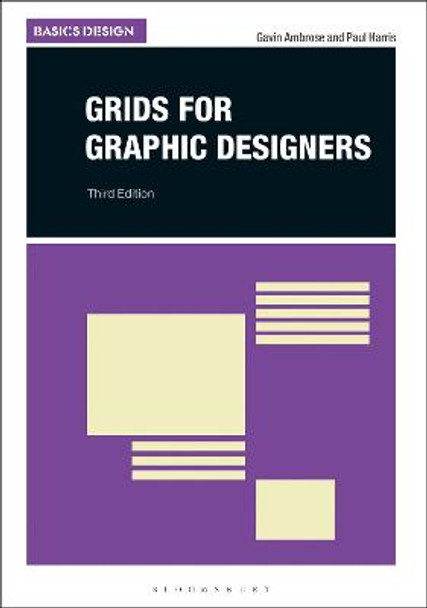Description
Grids are a fundamental tool in a graphic design and help the designer to organise elements on a page. Grids for Graphic Designers, 3e examines the way in which grids are used in contemporary practice. Through six new interviews with designers plus additional activities and exercises, students focus on how grids can be used effectively in design whether they are working with print or digital pages.
About the Author
Gavin Ambrose teaches at Brighton University and is a practicing graphic designer. He is the author of many highly regarded books for students covering all areas of design including Basics Design: Layout, 2e, The Production Manual, Fundamentals of Graphic Design and Design Genius among others. Paul Harris is a freelance writer and editor. His work has appeared in magazines and journals in both the US and Europe. He is a co-author and collaborator on numerous books on design.
Reviews
Subdividing space is commonplace in our culture and a traditional organizing principle. Our houses and apartments are divided into rooms; our drawers are designed with divided compartments to separate our things, and our parking lots are divided into rows of parallel spaces. In communication design, a grid provides a compositional framework through its network of horizontal and vertical intersecting lines that subdivide the page creating a guide to establish proportional relationships between the design elements. The authors of Grids for Graphic Designers state their goal is to introduce the basic principles of grid usage. They do so in a clear, articulate and visually informative process. This is a perfect text for students studying visual design, and those individuals who interested in grids and grid theory. -- Elizabeth Resnick, Professor Emerita of Graphic Design, Massachusetts College of Art and Design, USA
The 3rd edition of the Grid for Graphic Designers continues exploring ways in which contemporary graphic designers renew traditional approaches to 'grid making' practices, by emphasising both the imaginative and the practical. Examples of inventive designs are accompanied by meaningful annotations focusing both on what, and how it is represented. This exploration of relationships between content and grid format demonstrates the plurality of the approaches and the passage from fixed to fluidity as a modern way of representation. There are two generalisations about the grids: first, that they are inexhaustible and second, that they are selective. From this double perspective, the book demonstrates 'grid making' as a form of knowledge and provides a renewed context for the debate about the meaning and role of grids. -- Iwona Abrams, Senior Lecturer, BA Graphic Communication Design, University of Westminster, UK
An essential and authoritative toolkit for constructors of the humble grid that will both inform and inspire content delivery, whether for print or screen. Historic and contemporary examples brilliantly illustrate the ongoing fascination and challenge of how graphic designers confront the blank page; creating work that unites content and form to deliver purposeful and appropriate visual communication. -- Bryan Clark, Head of Graphic Design, Falmouth University, UK
Book Information
ISBN 9781474254779
Author Gavin Ambrose
Format Paperback
Page Count 216
Imprint Bloomsbury Visual Arts
Publisher Bloomsbury Publishing PLC
Weight(grams) 536g






